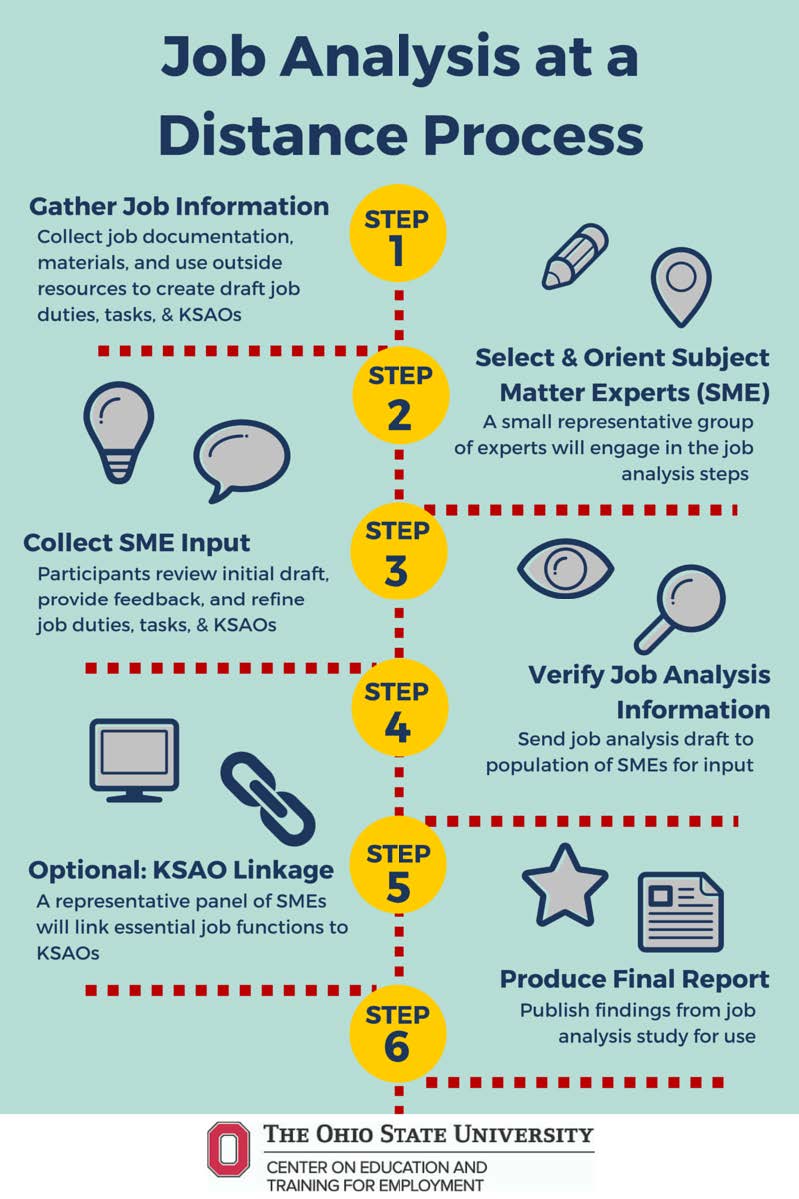Job or Task Analysis
A job or task analysis is a method used to identify the needed capabilities for properly executing a task or series of task meet the requirements for accomplishing the job or task.
There are many reasons to consider a job or task analysis. The most common reasons involve discovering areas in the implementation process that need to be either expose a risk or threat and must be corrected or suggest an opportunity for alterations that likely lead to more favorable results.
To begin analyzing a specific job or task, the first step is to determine the exact task to be evaluated. Next, the task is divided into smaller components that make up the various actions to take, decisions to make, or exact procedures that may apply, all influencing the way the task is implemented.
The last step to analyzing a job or task will vary on the initial purpose for conducting the analysis. Examples of next steps include designing a solution to address the proper execution of a job, identifying possible changes to implement (stating the impact) to better results, or confirming suspensions whether positive or negative.

References
Crystal, A. & Ellington, B. (2004). Task analysis and human-computer interaction: approaches, techniques, and levels of analysis. AMCIS 2004 Proceedings (391).
Job Analysis at a Distance [Digital image]. (2016). Retrieved April 11, 2019, from http://drik9qne4ujwc.cloudfront.net/content/uploads/20160413134344/info-graph-of-job-analysis-steps.jpg
Pershing, J. A. (2006). Handbook of human performance technology: Principles, practices, and potential. San Francisco, CA: Pfeiffer.
